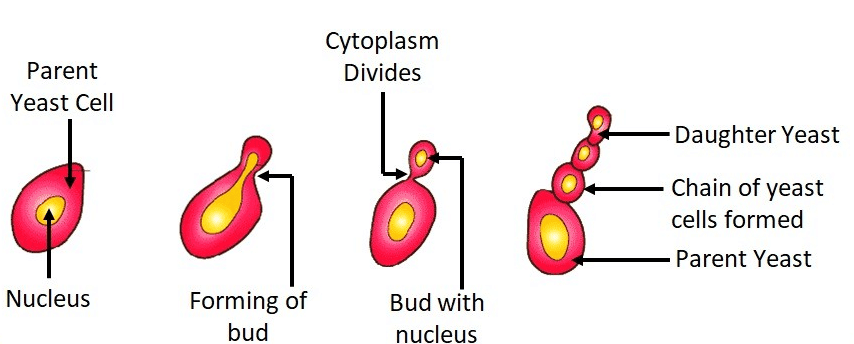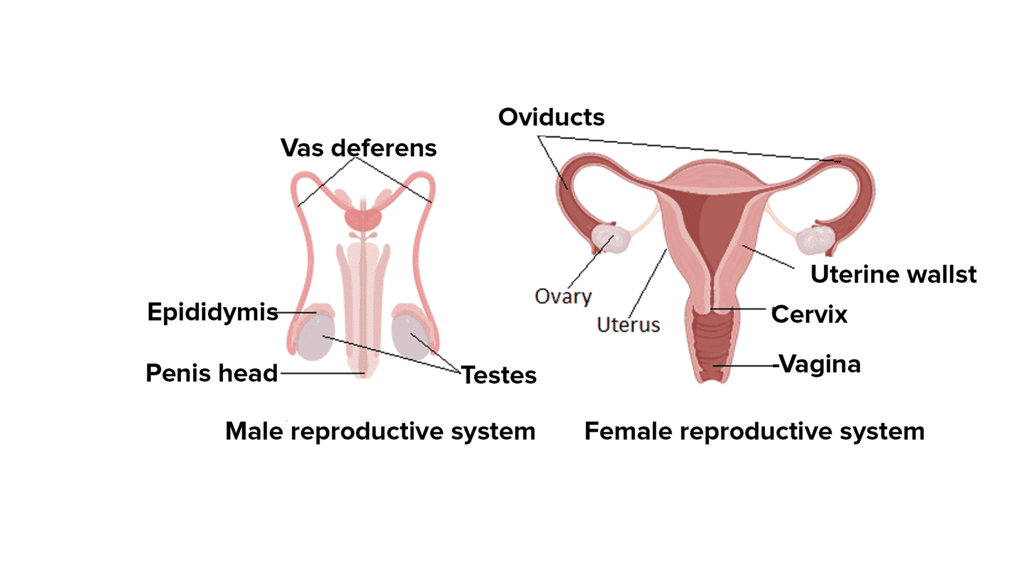Overview: How do Organisms Reproduce? | Science Class 10 PDF Download
Reproduction is vital for continuing the chain of life and passing on genes. Different organisms reproduce in various ways.
Do Organisms Create Exact Copies of themselves?
- Organisms reproduce and create new individuals of their kind. This is essential for the perpetuation of species.
- Information for the inheritance of features from parents to the next generation is present within chromosomes, in the form of DNA.
 DNA and Chromosome
DNA and Chromosome
- DNA is an information source for making proteins, which if changes will change the original body design.
- Thus, for reproduction, each organism must first make copies of its DNA, so that the daughter cell produced can have its copy of DNA. However, this DNA copying mechanism is not always foolproof.
- Any minor change in DNA, during copying, results in variation, which is the basis for evolution.
- This variation is important for the survival of species over time.
Modes of Reproduction used by Single Organisms
Two Modes of Reproduction:

Asexual Reproduction
- Involves a single parent, no gamete formation.
- Examples: Binary Fission, Budding, Vegetative Propagation, Regeneration, Spore Formation.
Sexual Reproduction
- Involves two parents, gamete formation occurs.
- Includes Meiosis as a critical step.
Asexual Reproduction
- Subdivided into different methods.
- Examples: Binary Fission, Multiple Fission, Budding, Vegetative Propagation, Regeneration, Spore Formation.
Binary Fission Binary Fission in Amoeba
Binary Fission in Amoeba
- Occurs in unicellular organisms.
- Mother cell divides into two daughter cells, each with a nucleus.
- Examples: Amoeba.
Multiple Fission Multiple Fission in Plasmodium
Multiple Fission in Plasmodium
- Occurs in unfavorable conditions (lack of food, moisture, temperature).
- Organism forms a cyst, then releases daughter nuclei when conditions improve.
- Examples: Plasmodium, Entamoeba.
Budding Budding in Yeast
Budding in Yeast
- Outgrowth produces a new organism attached to the parent.
- Detaches when mature, leaving scar tissue.
- Prominent in yeast and hydra.
Vegetative Propagation Vegetative Propagation in Potato
Vegetative Propagation in Potato
- New plant grows from fragments or specialized reproductive structures.
- Offspring are exact clones of the parent; no DNA mixing.
- Methods: Grafting, layering, cutting, tuber, tissue culture, etc.
Regeneration
- Hydra and Planaria can regenerate when cut into pieces.
- Specialized cells proliferate, form different cells and tissues.
- Known as development.
Spore Formation
- Knob-like structures (sporangia) form during unfavorable conditions.
- Spores inside sporangia develop into new individuals.
- Spores have protective walls; grow upon moisture contact.
Sexual Reproduction
Involves two individuals, male and female, to produce offspring. Male and female gametes fuse to create a new cell.
Sexual Reproduction in Plants
- Angiosperms have both male and female reproductive organs.
- Pollen grains produce male gametes, which fuse with the egg cell in the ovule.
- Gametogenesis, pollen transfer, fertilization, embryo formation, seed development, and fruit formation.
Reproduction in Human Beings
Human reproduction is a sexual process involving two parents. Offspring result from the fusion of gametes from each parent. Human reproduction is an example of sexual reproduction.
Sexual Dimorphism
Males and females have different reproductive systems.

Male Reproductive System
- Produces male gametes (sperms).
- Sperms have a head, middle piece, and a tail.
- Components of Male Reproductive System:
[Question: 906558]
- Testicles (testes): Oval organs responsible for sperm production and testosterone.
- Scrotum: Sac-like organ housing the testes, maintaining the required temperature.
- Vas Deferens: Tube where sperms mature and pass to the urethra.
- Accessory Glands: Seminal vesicles, prostate gland, and Cowper's gland; their secretions form semen.
- Penis: Cylindrical tube serving as a reproductive and excretory organ, delivering sperms during intercourse.
Female Reproductive System
- Active before, during, and after fertilization.
- Ovaries: Produce and store ovum (egg) and produce estrogen, a female hormone.
- Fallopian Tubes (Oviducts): Site of fertilization, connecting ovaries and the uterus.
- Uterus: Site for embryo development.
- Vagina: Connects the cervix to external female body parts.Route for the penis during intercourse and fetus during delivery.
|
85 videos|437 docs|75 tests
|
FAQs on Overview: How do Organisms Reproduce? - Science Class 10
| 1. Do organisms create exact copies of themselves? |  |
| 2. What are the different modes of reproduction used by single organisms? |  |
| 3. How does sexual reproduction work? |  |
| 4. Why is genetic variation important in reproduction? |  |
| 5. Can organisms reproduce without a mate? |  |

|
Explore Courses for Class 10 exam
|

|


















